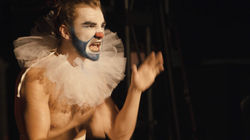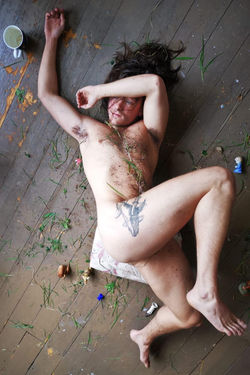DAY MATTAR
Liverpool's Nudey-Rudey, Shiny-Whiny, Non-Bin,
Kweer Poet & Performer
 |  |  |
|---|---|---|
 |  |  |
 |
SPRINGING FROM THE PEWS
May 2021 / Broken Sleep Books
'A SENSATIONAL, SEARING, AND UTTERLY SINGULAR ACHIEVEMENT: WHAT A FIRST PAMPHLET TO HAVE WRITTEN.'
- ANDREW MCMILLAN
Day Mattar’s Springing from the Pews is an explosive pamphlet which explores an episode of sexual violence through a verse play interwoven with confessions and journal entries. Mattar’s poetry is eloquent, with a dark intensity underlying the sugary surface, with echoes of Frank O’Hara and Sharon Olds. A breathtaking read, Mattar’s splenetic energy gushes out like water from a fire hydrant.
Praise for 'Springing from the Pews':
'Day Mattar’s ground-breaking debut, exploring the experience of sexual abuse, marries form and content to stunning effect. This is a world of memory and reality where graceful lyricism co-exists with a brutal candour: a recurrent image of birds becomes the surprising and lovely ‘murmuration of origami birds’ - birds folded to evoke peace, the peace desired by the poetic voice who has ‘for too long’ carried his abuser’s ‘cock like a torch.’
The keynote of these shocking, moving, and sometimes wryly-funny poems is their fearless and genuinely challenging ambivalence; through the elegant device of parallel texts, Mattar’s words enact the emotional bifurcation they express, of a desperate confusion on one hand and a taboo-defying celebration on the other.
Drawing on (among other things) the imagery of Catholicism, the questions Springing from the Pews asks - about innocence and confession, guilt and redemption - are unmistakably heartfelt: real, lived, questions. What, above all, does love mean, to a six-year-old child, or to the adults we become? Most urgently, perhaps, in the context of this poet’s experience, what are the limits of acceptance, and what if transgression is not remembered as a simple matter of wrong?
These mature, accomplished poems, for all that they are troubled and troubling, remain triumphantly alive to the possibility of redemption, and to the redemptive power of the art they represent.'
- Alicia Stubbersfield



